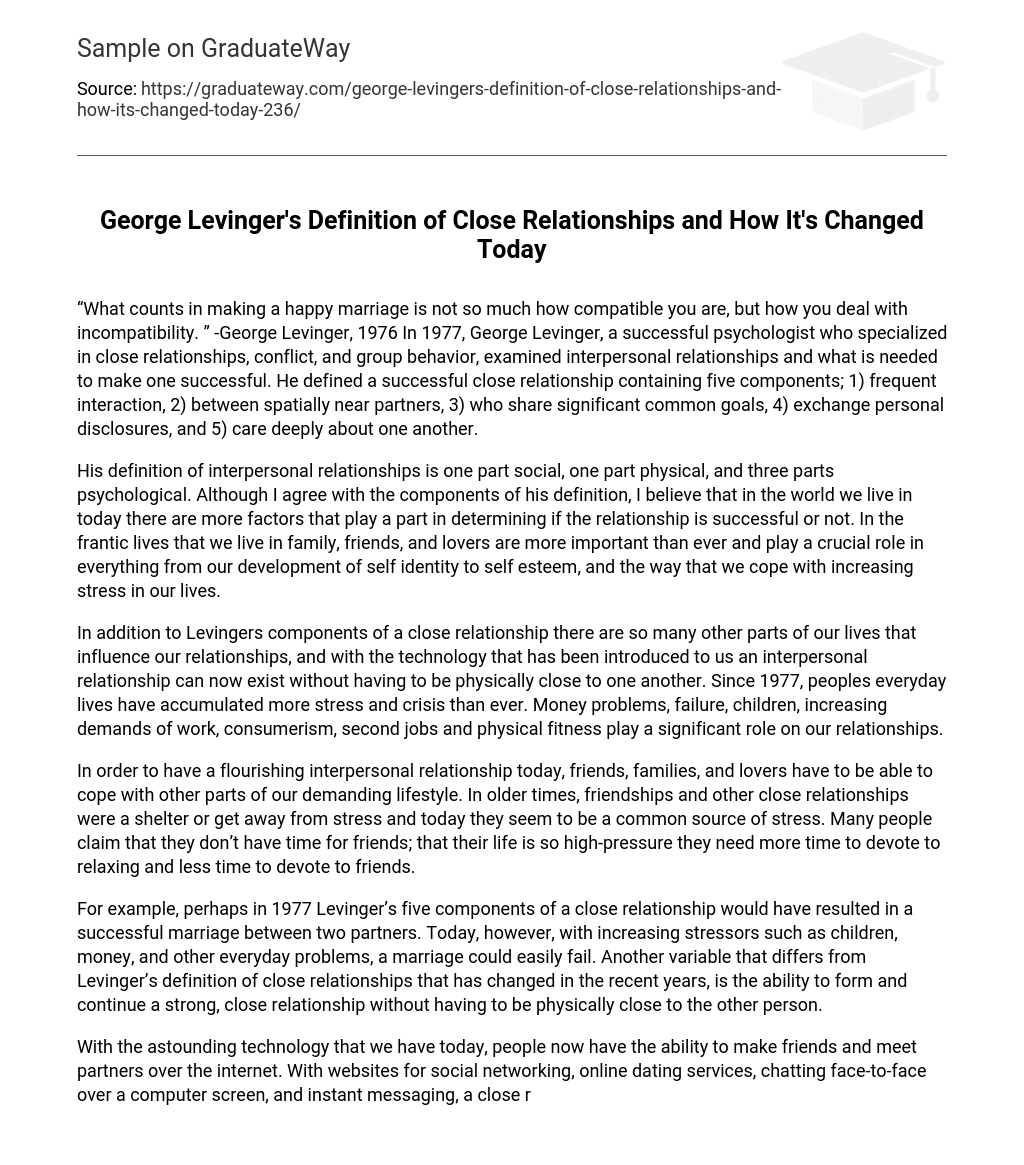According to George Levinger, an accomplished psychologist focusing on close relationships, conflict, and group behavior, he emphasized in 1976 that the crucial factor for a contented marriage is not compatibility itself but rather how the couple handles their differences. In 1977, Levinger delved further into interpersonal relationships and identified five vital elements necessary for a prosperous intimate connection. These elements encompass regular interaction between physically proximate partners who share significant common objectives, engage in personal revelations with one another, and possess genuine care for each other.
Although his definition of interpersonal relationships includes social, physical, and psychological factors, I contend that modern society introduces additional elements that enhance the success of relationships. Given the hectic pace of our lives, family members, friends, and romantic partners have become increasingly important. They play a vital role in shaping our self-identity and self-esteem while helping us manage increasing levels of stress.
Aside from Levinger’s components of a close relationship, there are various other factors in our lives that affect our relationships. With the rise of technology, it is now feasible for an interpersonal relationship to exist without physical proximity. Since 1977, stress and crisis have increasingly weighed down our daily lives. Problems like financial troubles, personal setbacks, parenting responsibilities, work demands, consumerism, multiple jobs, and physical fitness all greatly impact our relationships.
To effectively manage interpersonal relationships in contemporary society, it is crucial for friends, families, and partners to address the difficulties brought about by our busy lifestyles. While close relationships were once a source of solace from stress, they now frequently add to it. Many people claim that they are too busy for socializing with friends and believe that their hectic lives require more leisure time and less interaction.
Levinger’s five components of a close relationship in 1977 may have led to a successful marriage. However, in today’s society, the presence of stressors like children, money, and everyday issues can easily cause a marriage to fail. Another difference from Levinger’s definition is the possibility of forming and maintaining a strong relationship without physical proximity.
Thanks to advanced technology, individuals now have the opportunity to connect with friends and potential romantic partners through the internet. Various platforms such as social networking websites, online dating services, video chats, and instant messaging enable close relationships to flourish without physical presence. As long as consistent interaction takes place, friends and partners can successfully nurture their connection.
For instance, a college-bound high school graduate can now regularly communicate with their hometown best friend. They can even see and hear their friend’s voice. When I asked my 52-year-old father about Levinger’s definition of a close relationship, he agreed with all five components – until I brought up the aspect of technology. My father, who is widowed after 27 years of marriage, lives in Cincinnati which is about 1,000 miles away from me. Despite the distance, we talk every day.
I reminded him that we still use the same resources and regularly hear each other’s voices. This made him realize that despite the distance between us, we have a close relationship and his perspective started to shift. According to George Levinger, there are five essential components for a successful interpersonal relationship which are still valid. However, given the constant stressors in our lives and advancements in technology today, I believe that this definition may be slightly outdated.
Relationships now require more attention than they did in 1977, due to new problems and anxieties. However, technology allows us to create and maintain close relationships with people who are far away from us. With some adjustments, Levinger’s definition of close relationships can be updated to reflect these changes.





